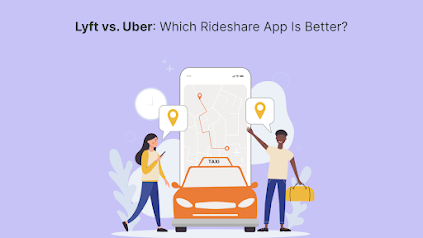When it comes to ridesharing, Lyft and Uber dominate the market. Both offer quick, convenient transportation with just a few taps on a smartphone. However, each has unique features, pricing models, and user experiences that can make one a better fit for specific needs. Let’s take a closer look at the differences between Lyft vs Uber to help you determine which app might be the right choice for you.
Availability and Coverage
Uber: Global Reach and Extensive Network
Uber, as one of the first rideshare companies, has grown to operate in over 70 countries and across hundreds of cities globally. Whether you’re traveling internationally or moving between cities, you’re likely to find Uber available. This makes it a convenient option for travelers and people in more remote areas, where Lyft’s coverage might be limited.
Lyft: Focused on the U.S. and Canada
Lyft is primarily available in the United States and Canada, with a strong presence in most major U.S. cities. While it’s still widely accessible across North America, Lyft’s reach doesn’t match Uber’s global network. For riders staying within these regions, Lyft is just as reliable as Uber in terms of availability.
Pricing and Cost Comparison
Pricing is often a key factor when choosing between rideshare options. Both Uber and Lyft use dynamic pricing, which means costs can surge during peak times, such as rush hours, holidays, or bad weather.
Uber’s Flexible Pricing Options
Uber offers multiple ride options with varying price points, from budget-friendly choices like UberX to premium services like Uber Black. Uber also provides upfront pricing, which allows riders to see the estimated cost before confirming the ride. Uber tends to be slightly more expensive than Lyft on average, but it provides more luxury options for those willing to pay for added comfort.
Lyft’s Competitive Rates
Lyft is often seen as the more budget-friendly option. It also shows upfront pricing, so there are no surprises at the end of a ride. Lyft offers similar ride tiers to Uber, like Lyft XL for larger groups and Lyft Lux for premium experiences, but typically at a lower price point. For riders focused on affordability, Lyft may be the better choice.
User Experience and Features
Uber’s Wide Range of Features
Uber offers a variety of unique features, including the ability to schedule rides in advance, real-time ride tracking, and a reward program (Uber Rewards) for frequent riders. Additionally, Uber’s app includes options for sharing ride details with family or friends for safety. Uber’s interface is generally intuitive, and it’s easy to find the right ride option based on your needs.
Lyft’s Simple and Friendly Interface
Lyft is known for its user-friendly, straightforward app. It offers features similar to Uber, such as real-time tracking and the ability to share ride details. Lyft also has a rewards program called Lyft Pink, offering perks like priority pickup and savings on rides. Lyft tends to emphasize community and friendliness, with in-app messaging that highlights driver and rider courtesy.
Safety and Security
Uber’s Safety Features
Uber has made significant investments in safety features, including the option to contact 911 directly from the app and a “RideCheck” feature that detects if a ride goes off-course or stops unexpectedly. Uber also provides in-app ID verification for drivers and background checks, as well as an emergency button for riders.
Lyft’s Safety Commitment
Lyft similarly emphasizes safety, with features like in-app emergency contact options, 24/7 critical response, and continuous background checks for drivers. Lyft also allows riders to share their trip details with friends and family for added peace of mind. While both companies offer similar safety features, Uber’s global scale means that its safety initiatives may feel more robust in certain areas.
Driver Satisfaction and Earnings
Uber’s Larger Market Share
Uber has more drivers due to its international presence, which may lead to faster pickup times and a larger selection of ride options. Drivers on Uber often report higher earnings potential, but this varies significantly depending on location and time.
Lyft’s Supportive Driver Community
Lyft is known for cultivating a positive, community-oriented experience for its drivers. Many Lyft drivers report higher satisfaction due to Lyft’s emphasis on driver support and fair treatment. However, since Lyft is smaller, its demand might be lower than Uber’s in certain areas, which could impact driver availability and earnings.
Conclusion: Which Rideshare App Is Better?
Choosing between Lyft and Uber ultimately comes down to your personal preferences and needs. If you prioritize global availability, multiple ride options, and slightly higher luxury features, Uber is likely the better choice. However, if you’re looking for a more budget-friendly, community-focused option with similar safety features, Lyft may be the ideal choice.
For most people, it’s beneficial to have both apps on their phone. Pricing and wait times can vary between the two, so checking both options before booking a best ride-hailing app can help you get the best deal and service for your trip.





No comments:
Post a Comment